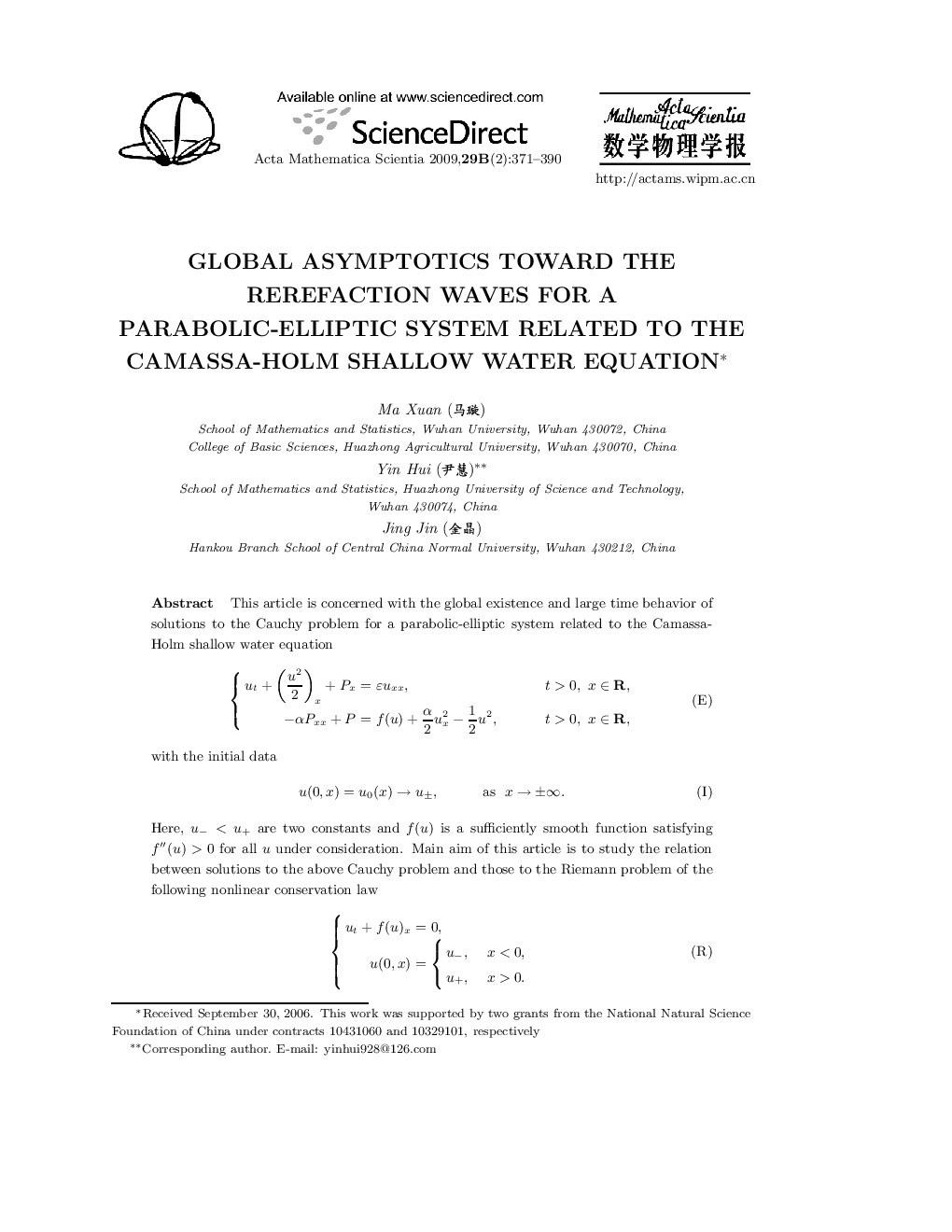| کد مقاله | کد نشریه | سال انتشار | مقاله انگلیسی | نسخه تمام متن |
|---|---|---|---|---|
| 4664700 | 1345305 | 2009 | 20 صفحه PDF | دانلود رایگان |

This article is concerned with the global existence and large time behavior of solutions to the Cauchy problem for a parabolic-elliptic system related to the Camassa-Holm shallow water equation equation(E){ut+(u22)x+Px=ɛuxx,t>0,x∈R,-αPxx+P=f(u)+α2ux2-12u2,t>0,x∈R,with the initial data equation(I)u(0,x)=u0(x)→u±,as x→±∞.Here, u− < u+ are two constants and f(u) is a sufficiently smooth function satisfying f″(u) > 0 for all u under consideration. Main aim of this article is to study the relation between solutions to the above Cauchy problem and those to the Riemann problem of the following nonlinear conservation law equation(R){ut+f(u)x=0,u(0,x)={u-,x<0,u+x>0.It is well known that if u− < u+, the above Riemann problem admits a unique global entropy solution uR(x/t)uR(x/t)={u-x≤f′(u-)t,(f′)-1(x/t),f′(u-)t≤x≤f′(u+)t,u+,x≥f′(u+)t.Let U(t, x) be the smooth approximation of the rarefaction wave profile constructed similar to that of [21, 22, 23], we show that if uo(x) − U(0,x) ∈ H1(R) and u− < u+, the above Cauchy problem (E) and (I) admits a unique global classical solution u(t, x) which tends to the rarefaction wave uR(x/t) as t → +∞ in the maximum norm. The proof is given by an elementary energy method.
Journal: Acta Mathematica Scientia - Volume 29, Issue 2, March 2009, Pages 371–390